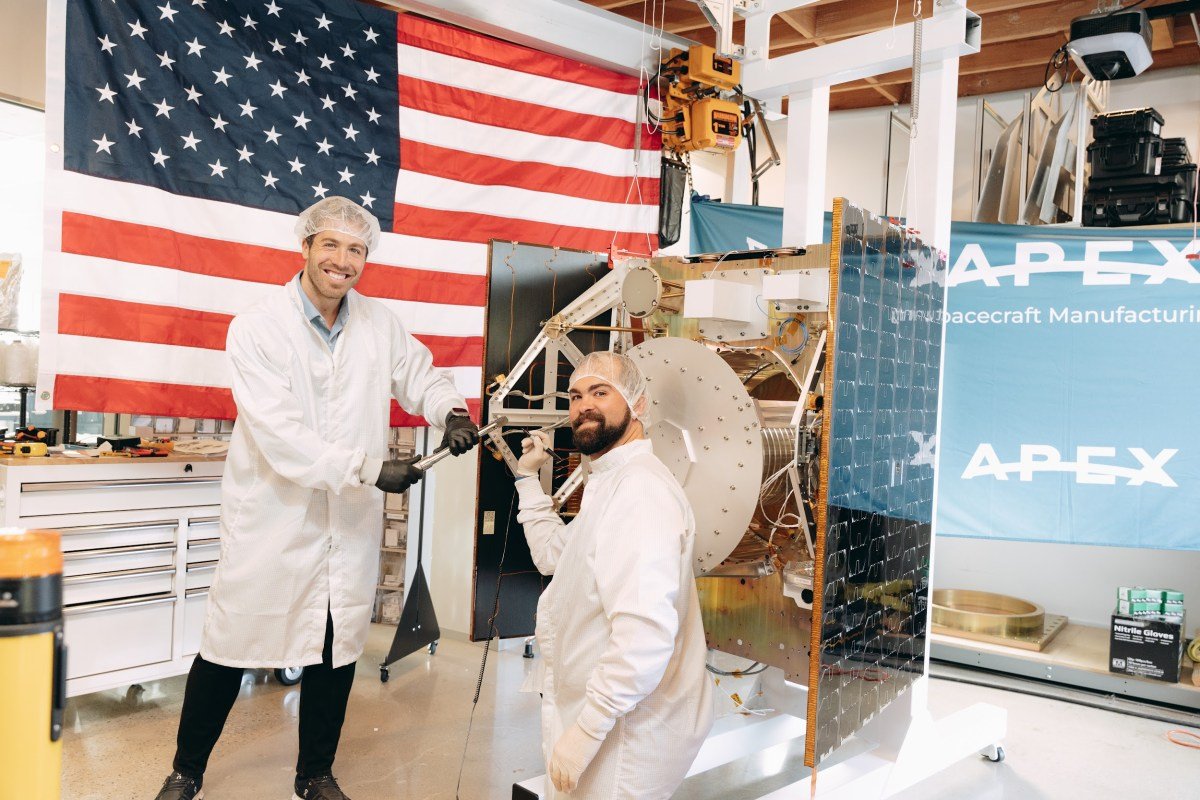Apex Space has just taken a major leap towards revolutionizing the satellite bus manufacturing industry, as the startup confirmed the successful deployment of its first vehicle into orbit on Tuesday.
After launching its first satellite, dubbed “Aries,” on SpaceX’s Transporter-10 rideshare mission on Monday, Apex’s mission operators quickly established contact with the spacecraft. According to Apex’s CEO, Ian Cinnamon, the timely communication was possible because the satellite happened to be flying over a ground station during its deployment.
The team first received a UHF beacon from the spacecraft, which acts as a backup radio signal and transmits data packets about its state of health. After receiving some of these packets, the team was able to switch to an S-band radio, allowing for a higher rate of data transfer and, most importantly, enabling two-way communication with ground stations.
This initial data confirmed that the satellite was functioning properly in orbit – a remarkable achievement, making it the fastest clean-sheet design to production spacecraft to ever reach orbit, within just one year.
Based in Los Angeles, Apex is now preparing to conduct a series of tests on the Aries satellite and its subsystems before delivering it to its unnamed customers. These customers will have approximately six months to run their payloads on the spacecraft.
Initially, it was not part of the plan to carry customer payloads on this first mission, which was primarily designed as a technology demonstrator, Cinnamon revealed in a recent interview.
“But as we started talking to customers who were interested in buying entire satellites for themselves,” he explained, “they suggested that as a way to get to know us, they could pay us to put a small payload on board and test it out for a few months. This then led to us considering why not? We have the space on board, it’s a good opportunity for us to practice, make some profit, and build relationships.”
After the customers have achieved their objectives, the Aries SN1 satellite will continue its journey as a software testbed in orbit, allowing Apex to test its flight software and guidance, navigation, and control systems. The satellite is expected to remain in orbit for another five years.
According to Cinnamon, this will prove to be an incredibly valuable resource for Apex in the years to come.
“Having the satellite in orbit will be immensely valuable for us,” he said. “It will serve as a testing platform for software and systems, providing us with valuable insights for our future endeavors.”
Fueled by investments from top firms such as Andreessen Horowitz and Shield Capital, Apex is dedicated to tackling the satellite bus “bottleneck” currently plaguing the space industry. In addition to the Aries, a small ESPA-class spacecraft bus capable of supporting payloads up to 100 kilograms, the company is also working on two larger bus product lines – Nova and Comet. Production of these buses is expected to begin in 2025.









[…] veterans, has just recently received a new injection of funding to propel their groundbreaking satellite servicing technology into […]